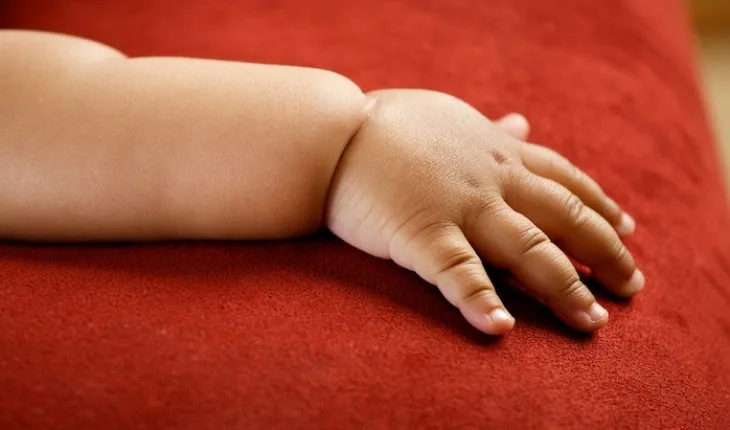Results of our research have shown that babies born to mothers with gestational diabetes have more body fat at two months of age compared to babies born to healthy mothers. The study used MRI scanning to measure body fat in 86 babies – we took these readings shortly after birth, and again when the babies were 8-12 weeks old.
Published in the journal Diabetes Care, results of the study showed that although babies born to mothers with gestational diabetes had no differences in body fat content at birth, by two months old they had 16 per cent more body fat compared to those born to healthy mothers. Most of the babies in the study were breast-fed. The reasons behind the differences are unknown, but possible explanations include changes in the baby’s metabolism while in the womb – or even differences in the composition of breast milk in mothers with gestational diabetes.
Gestational diabetes affects around one in 20 pregnant women in the UK (and nearly one in ten in the US) and results in a woman’s blood sugar levels becoming too high. The condition, which can be controlled with diet, exercise and medication, usually starts when the woman is around seven months pregnant. Typically, it resolves soon after giving birth – though the woman may be at elevated risk of type 2 diabetes later in life.
“This is the first study to show the condition causes such early changes in the baby, despite no differences at birth,” explains my research colleague Dr Karen Logan. Gestational diabetes is becoming more and more common, and babies born to these mothers are at increased risk of developing diabetes when they grow up. Therefore we need to understand what effects maternal diabetes has on the baby. This new study suggests diabetes in the mother can trigger changes in the baby at a very early stage. One of the main causes of gestational diabetes is thought to be excess weight, though other factors play a role. Many of the women in our study were not overweight, and there are other possible causes of the condition, such as genetic predisposition. All of the women in the study had their condition well-controlled, however this study suggests that even good treatment during pregnancy may not be enough to prevent longer term problems in the baby.
The reasons behind the difference in body fat is unknown, but theories include changes in the baby while still in the womb that trigger increased fat storage once born, alterations in the mother’s breast milk, or differences in the control of appetite in the baby. The majority of babies in our study were breast fed, and previous studies have suggested that diabetes may cause changes in breast milk – so that it contains more sugar, fat or different levels of compounds that control appetite, called hunger hormones.
The study, which was conducted at Chelsea and Westminster Hospital in London, also tracked the weight of the babies. Although babies born to mothers with gestational diabetes were found to weigh slightly less at birth, both groups of babies had a similar weight at ten weeks old. The team’s next project will involve analysing the composition of breast milk from mothers with gestational diabetes. It is also unclear at this stage whether pre-existing diabetes in the mother has similar effects to gestational diabetes. If parents have concerns about their child’s diet or weight they should speak to their health visitor or GP.
In the current study, which was funded by the charity Action Medical Research, our collaborative research team scanned 42 babies whose mothers were diagnosed with gestational diabetes, and 44 babies born to mothers without the condition, as a healthy control group. We asked the mothers to feed the babies, and once they were asleep they were given mini ear muffs and placed in a special moulded beanbag, before going into the MRI scanner. Most of the babies slept soundly during the scan, which took around 20 minutes – possibly because they found the background noise comforting. If they woke and started crying we immediately took them out of the scanner so the mum could resettle them – however, this happened very rarely. The MRI technology itself is very safe – it uses no radiation and has been used extensively in previous research studies.”






